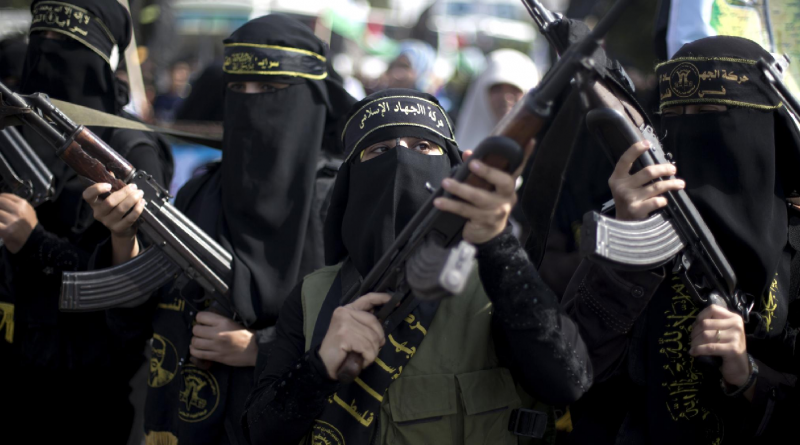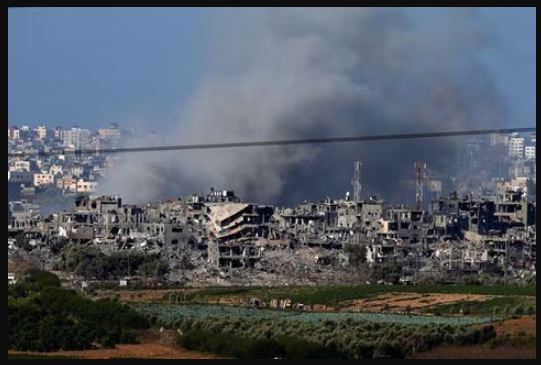OPINION: A Study on the Status and Roles of Women in the Printed Jihadi Media
by Naziha Mouhieddine
Although feminist jihadist magazines are very limited, as far as we know, their emergence around the time of Al-Shamkha can be considered an “attempt” to establish women’s journalism within jihadist organizations
This study attempts to define and analyze the status and role of women through the written publications of jihadist organizations, using Al-Shamkha magazine as a case study.[1]
It is known that women’s press in the Arab world did not appear until the first half of the twentieth century, as one of the platforms through which the nascent women’s rights movement would express its interests and demands. While Islamic women’s movements focused on the status of women and their issues under the shari’a (Islamic law), the Islamic State (ISIS) cannot be considered an extension of these movements; its rules and mechanisms are too different, even if its main demand is a return to the shari’a.
Al-Shamkha was a jihadist magazine that was first published in 2010, with a second edition published in 2011. It ceased publication after that. Al-Shamkha described itself as a feminist Islamic jihadist magazine and was published by the Al-Fajr Media Center. While Al-Fajr is an Al-Qaeda platform, and was guided by Osama bin Laden until his death in 2011, it was closely associated with the ISIS movement between 2007 and 2012, in the period when ISIS’s relationship with Al-Qaeda was ambiguous. Al-Shamkha was directed at “female mujahideen”, i.e. women who were part of Islamist groups.[2]
Its subjects ranged between da’wa (proselytism) articles, testimonies, as well as educational and aesthetic advice, written in the names of women—often under pseudonyms like “Um Razan” and “Um Ghadir”—and men.
Although Al-Shamkha magazine was limited in terms of the issues published, it represented one of the tributaries of jihadist thought, and it chronicles an important stage in the expansionist project of jihadist organizations, which required the existence of other forms of mobilization that responded to the expectations of this new audience of youth, women, and children. This audience consisted of ideologues who were ready to comply with what they considered divine truth and justice, but who had also grown up in a different culture from the 1990s onward, where science and logic were more prevalent.
In general, the discourse directed at women from the first pages of the magazine reminds them of the obligation to shoulder the responsibilities imposed upon them by the historical circumstances that faced ISIS at that time. Failure to fulfill their role would lead to exposing the umma (worldwide Islamic community) to danger. The danger here lies in women neglecting their religious role, which is the only guarantor against the enemies of the Islamic State.[3]
The responsibility here takes two forms. First, it is a tool in the hands of the enemies because of women who fail to fulfil their religious obligations; second, as the mother, she has the responsibility for raising umma’s heroes who will defend it.[4]
Lofty women—“Lofty” being the English translation of “Shamkha”—are those who adhere to their religion, which focuses on the priority of raising children in order to prepare them for the building of a unified Islamic umma.
This study of feminist jihadist media enables us to draw two main conclusions:
- First, related to the role that media plays in jihadist strategies, whether audio, visual or through social media: the relationship between terrorism and the media is one that allows jihadist groups to highlight their theatrical side and to showcase an ideology based on fear and the shaking of convictions.
- Second, it shows the place jihadists conceive of women occupying in their movement. Women are expected to maintain their commitment to their own domain (the home and caring for their mujahid husband) and to be satisfied with their role in recruitment and da’wa.
It is notable that ISIS has departed from the second part in the years since. Al-Shamkha magazine makes no mention of women being involved in military operations, and even as reports started surfacing in Western media in the mid-2010s of women leading ISIS attacks, there was good reason to think this was mistaken because even ISIS’s messaging continued to deny that women could play such a role. In late 2017, however, ISIS reversed itself, and specified conditions under which women could engage in militant activities.
Although feminist jihadist magazines are very limited, as far as we know, their emergence around the time of Al-Shamkha can be considered an “attempt” to establish women’s journalism within jihadist organizations, and represent a turning point in the direction and vision of women’s roles in jihadism that had been so clearly defined before. In the years 2010 to 2016, Islamist groups witnessed the influx of significant numbers of mujahideen from various countries, which formed an important base accustomed to the digital consumption of information, whether directed to males or females. Al-Shamkha magazine was the women’s magazine par excellence: It reflects the organization’s orientations and defines the areas of freedom for the women of the organization and the limits of what will be required of them, just as it was the case for other women’s magazines in the world.
However, looking at the religious authority of Islamist organizations, we find that Al-Shamkha raises an important question: Is it a magazine directed to women or written by women? Indeed, the question may be controversial, as in many women’s magazines we find male writers or editors-in-chief. Yet, when we look at the distribution of materials, we find that the central contents are written by males, and this means that Al-Shamkha magazine is the organization’s platform directed to mujahideen women, not for mujahideen women’s communication among themselves, which highlights the ideological background of the organization, which does not equate women’s role in jihad to that of men, but rather it places women in the service of men–as a child, and in relation to their husband, leader, and Caliph
The importance of the da’wa discourse of Islamist organizations, as shown in Al-Shamka, is based on the complete generalization of female gender to women, which is contrary to their modern differentiation and to the project that aims to liberate them. It actually aims to expedite their inclusion in motherhood. Motherhood here is an important entry point for tightening the organization’s control over the mujahideen women, who become recruits in the service of the mujahid son, and hence the organization ensures its continuity.
The lack of more issues of Al-Shamkha may be explained by Al-Qaeda and ISIS being besieged during that period. The fact that there was a women’s press launched in that era may even be related to this development, a need to shape the ideology of these organizations to broaden women’s role beyond service to men. More research is needed on the reasons for the creation of such a magazine.
Of course, Al-Shamkha magazine belongs to what is now distant history in jihadist terms: terrorist military strategies have moved on considerably since 2010-11, especially in the case of ISIS. Nonetheless, the magazine testifies to the period of transformation as ISIS sharpened its distinction from Al-Qaeda. Therefore, there is a need to examine the post-Al-Shamkha ISIS archive, to examine the new ideas and the new platforms they were disseminated on, in order to further determine the status of the mujahideen women within ISIS.
References
- [1] This study is part of the research conducted as part of the Ben Khaldun project on jihadist culture, which aimed to build a database on jihadist culture, based on the texts issued by ISIS.
- [2] The first issue was published under the cover of Al-Qaeda and the second at the beginning of the organization’s independence under the banner of the Islamic State, and the evidence is the flag of the Islamic State, which topped the cover of the magazine.
- [3] “Islamic Ummah faces today a difficult time… Enemies are attacking it from the East and the West. Muslims became strangers … However, Allah provides them with a select few who dedicated their souls and lives for Allah, to defend Islam and lift its banner. And since women are half of the society, and even all of the society, by giving birth to the other half, our enemies are keen to keep her away from her true religion and true role; because they know well how will be the situation if she entered the battlefield” (the editorial).
- [4] “The supporter and backer of the current knights (heroes) who are the men of Islam” (editorial).
Article first appeared on European Eye on Radicalization.
Naziha Mouhieddine, a research Professor, member of the “Jihadi Culture” research team, Chouaib Doukkali University in El Jadida, Morocco.
Disclaimer: Views expressed by writers in this section are their own and do not reflect Milli Chronicle’s point-of-view.



